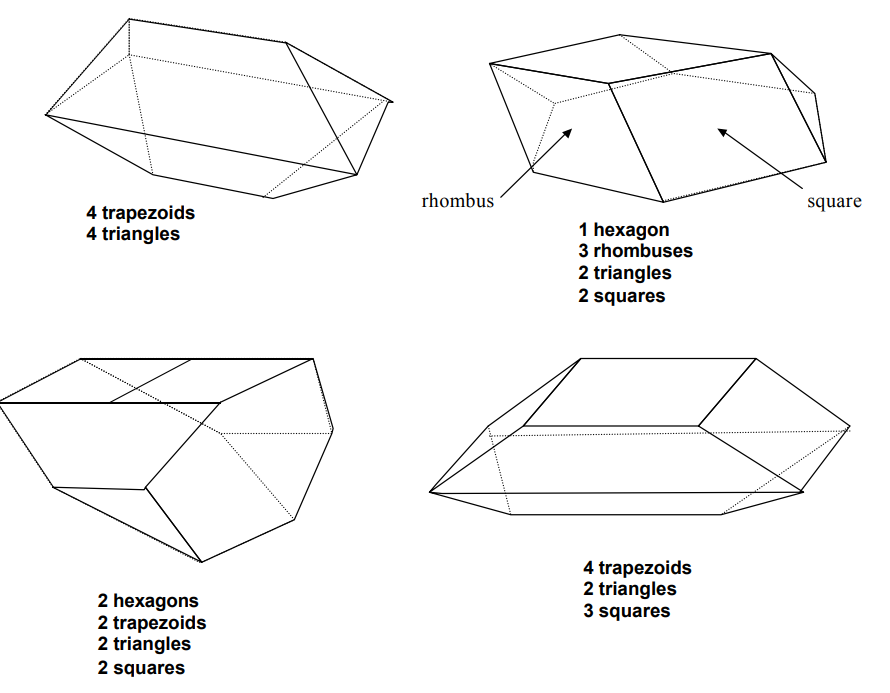Mathematics
Grade Levels: 3rd Grade, 4th Grade, 5th Grade, 6th Grade,
Topics: Geometry
Common Core State Standard: 6.G.1, 7.G.6,
Concepts:
· Polygon
· Polyhedron
· Can identify/describe common polygons.
Materials:· One model polyhedron for each pair of students.
· Complete set of polygons for each of the model polyhedrons.
· Labeled baskets for different types of polygons.
Lesson:
Procedure: Review the definition of “polygon,” the types of polygons and their characteristics. (Elicit as much of this information from the students as possible.)
Show students models of polyhedrons, and hand out one to each pair of students. Ask them to study them and notice what polygons are used. Make sure that students’
observations include key points (“it’s a solid figure” and “the sides are polygons”) so these points are covered. In your discussion, introduce the word “polyhedron,” discuss
its derivation (“many faces”) and evolve a definition (“a solid figure whose sides are polygons”).
Students are to work in pairs. Tell the students that each pair is to make a copy of their model, using the polygons in the baskets at the front of the room. Once all students
understand the instructions, have them begin.
As students are working, circulate to see how students are doing. As students finish, have them write down 1) how they solved this problem and 2) some possible uses of the
polyhedrons that they made.
Continue until all or most students have completed the activity. Wrap up with class discussion of the strategies various students used to solve the problem, and the possible
uses of the polyhedrons they made.
Making Model Polyhedrons
You will need these shapes for this activity: equilateral triangles, squares, rhombuses in which the narrow angle is 60 degrees, hexagons, and trapezoids. All edges except the
long side of the trapezoids should be the same length (4 inches is a good length). The long base of the trapezoid should be twice the length of the short base.
Make enough copies of each model below so that each pair of students can have one. For each model you make, you will need one more complete set of its polygons for the students to use as pieces of their polygons.

